Sydney Long ( 1871-1955 )
Get a Long Certificate of Authenticity for your painting or a COA for your Boucher drawing or print.
For all your Long artworks you need a Certificate of Authenticity in order to sell, to insure or to donate for a tax deduction.
How to get a Long Certificate of Authenticity is easy. Just send us photos and dimensions and tell us what you know about the origin or history of your Long painting, drawing or print.
If you want to sell your Long painting, drawing or print use our selling services. We offer Long selling help, selling advice, private treaty sales and full brokerage.
We have been authenticating Long and issuing certificates of authenticity since 2002. We are recognized Long experts and Long certified appraisers. We issue COAs and appraisals for all Long artworks.
Our Long paintings, drawings and print authentications are accepted and respected worlwide.
Each COA is backed by in-depth research and analysis authentication reports.
The Long certificates of authenticity we issue are based on solid, reliable and fully referenced art investigations, authentication research, analytical work and forensic studies.
We are available to examine your Long painting, drawing or print anywhere in the world.
You will generally receive your certificates of authenticity and authentication report within two weeks. Some complicated cases with difficult to research Long paintings or drawings take longer.
Our clients include Long collectors, investors, tax authorities, insurance adjusters, appraisers, valuers, auctioneers, Federal agencies and many law firms.
We perform Sydney Long art authentication, appraisal, certificates of authenticity (COA), analysis, research, scientific tests, full art authentications. We will help you sell your Sydney Long or we will sell it for you.
Sydney Long was an Australian artist, active as a painter and printmaker. His work may be considered an example of the Art Nouveau style in Australia, and he is one of the country’s most important representatives of the Symbolist movement. Many of his images portray magical, almost dreamlike scenes, inviting the viewer to experience something almost transcendental or reverential. He remains a popular artist in his homeland, where many of his paintings remain on permanent display.
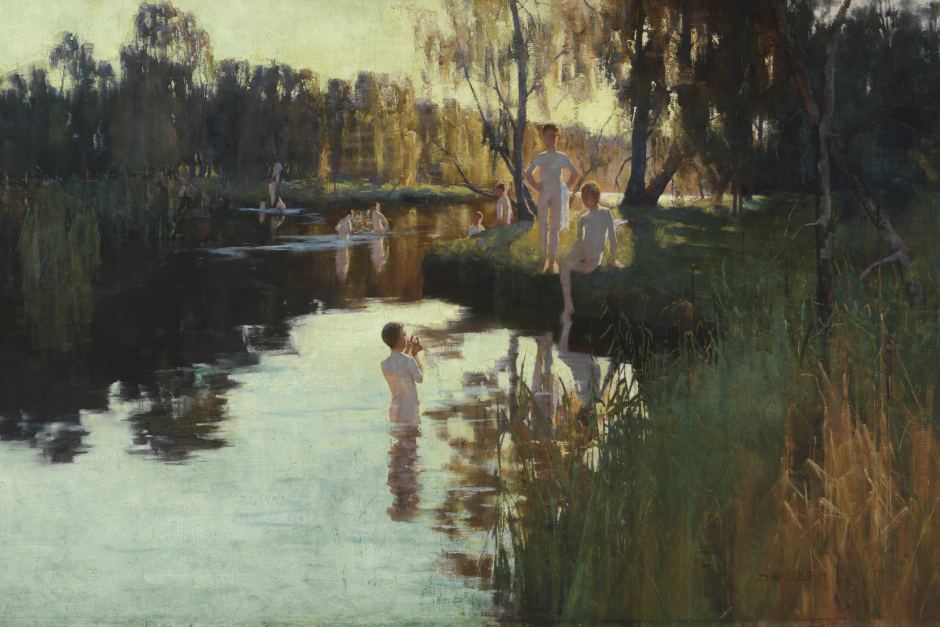
Long first came to the attention of the art world in the 1890s, while studying at the Art Society of New South Wales at Sydney. His painting By Tranquil Waters, executed in 1894, was purchased that year by the National Gallery of Art of New South Wales. The painting, an Impressionistic scene of boys bathing in Cook’s River, attracted significant critical attention, as did its purchase by the National Gallery.
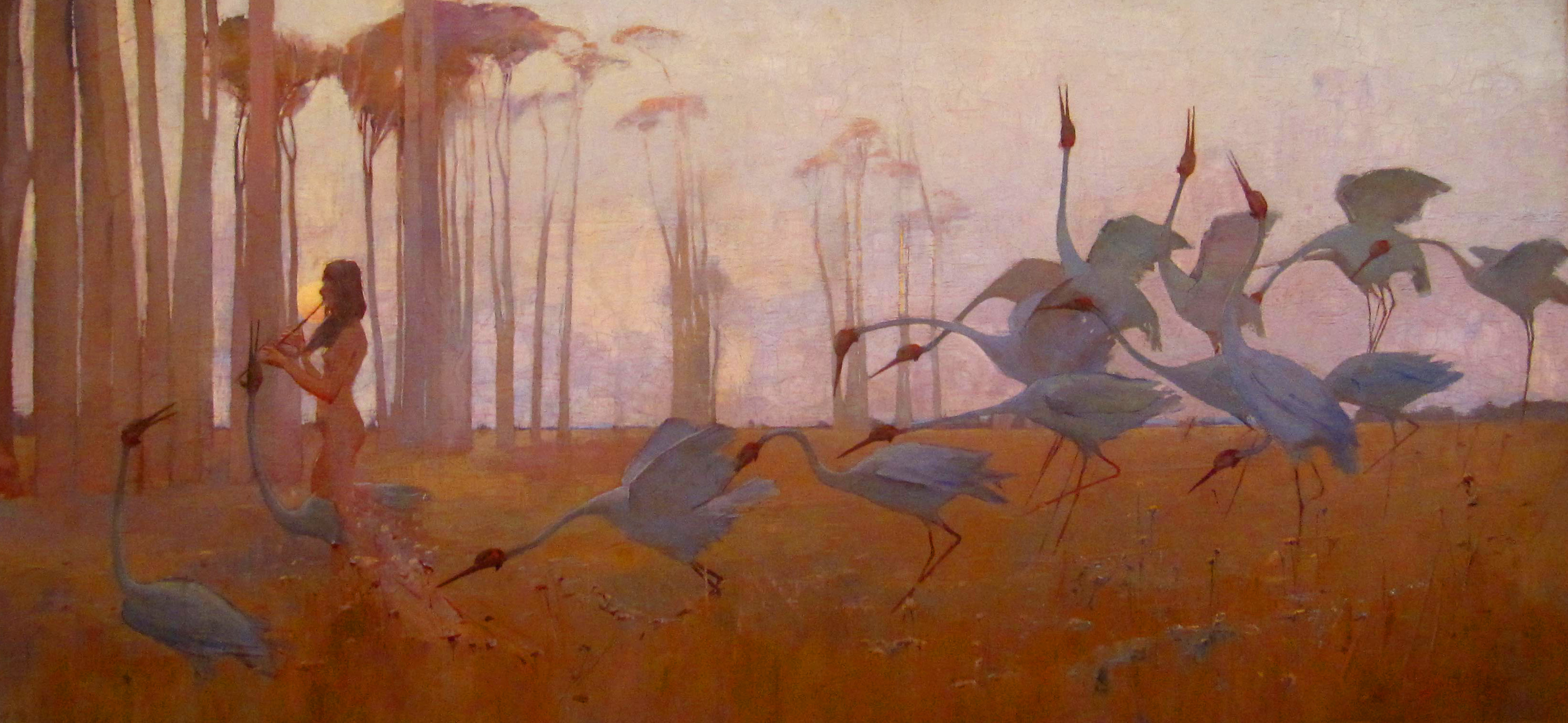
Following the success of this painting, Long began working in a style that was increasingly decorative, with a color palette that was often restricted to a small range of blues and grey-greens. His works’ flatness—in which the picture plane’s two-dimensionality is emphasized—illustrate the influence of Symbolism and the English Aesthetic movement. Paintings such as Spirit of the Plains (1897) and Flamingoes (c. 1907) demonstrate this stylistic idiom. These works, as well as paintings such as Pan (1898), also highlight Long’s desire to depict mythical subject matter through a uniquely Australian lens.
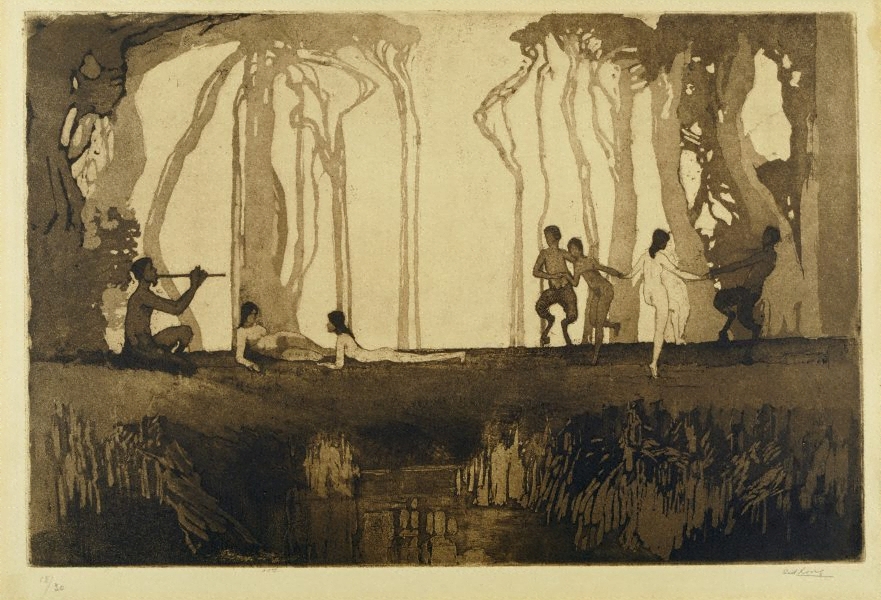
In September of 1910 Long left Australia for England, a journey he had been wanting to undertake for several years. For the next decade he lived, studied, and worked primarily in London, making occasional visits to Paris and Bruges.
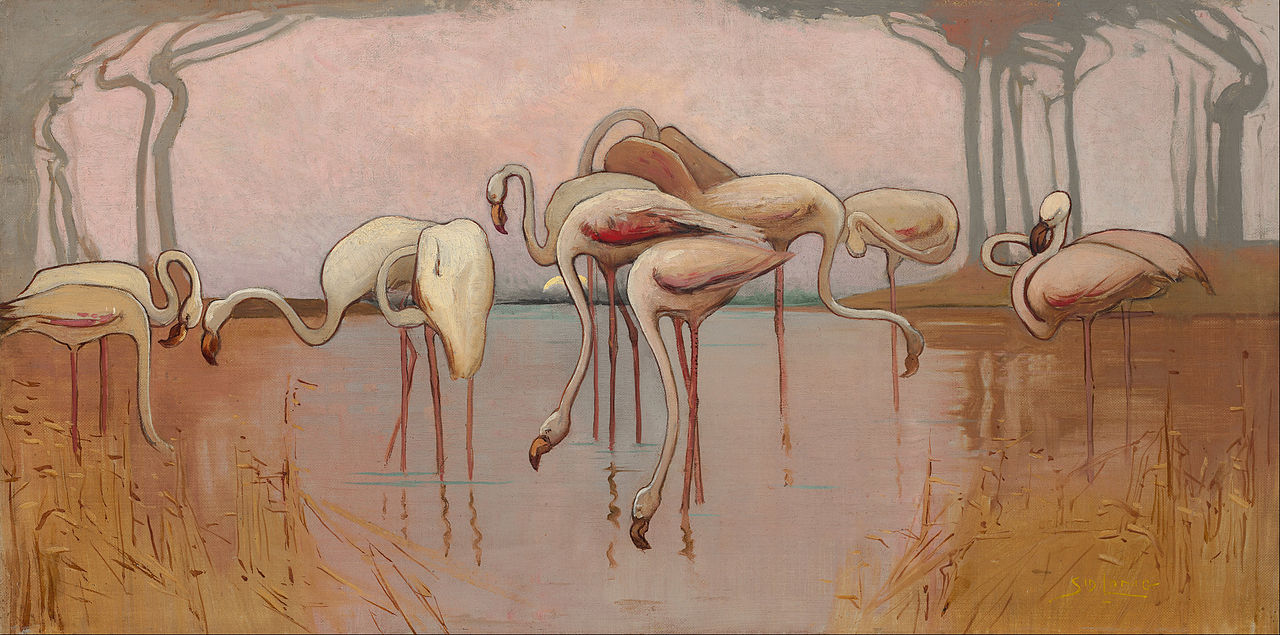
It was during this London period, in 1918, that Long began his studies with printmaking. His aquatint reproductions of earlier paintings—notably Pan and Spirit of the Plains—became particularly successful, and Long was recognized as a noteworthy printmaker when he returned to Sydney in 1918.
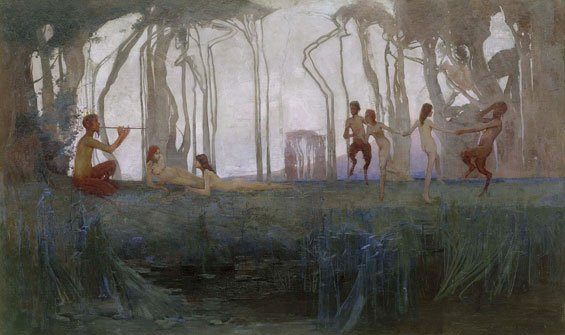
After his return to Australia Long settled in Sydney in 1925, where he set up a studio and taught etching. For years he remained one of the country’s foremost printmakers. When the art world’s vogue for etchings fell out of favor in the mid-1930s, Long returned to painting. He continued painting landscape scenes during the last decades of his life. When his health began to fail he and his wife, Catherine Brennan, returned to London in 1952, where he died in 1955.
